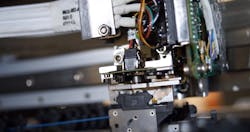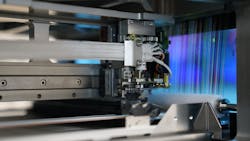Cloud computing, staggering amounts of video streaming, and ever-increasing wireless communications have created a rapidly growing demand for more bandwidth and remote controllability. To meet this demand, network operators are looking for software-defined reconfigurability, the fast and low-cost provisioning of services, improved energy efficiency, and better scalability. One of the key elements in need of automation and orchestration is physical layer networking. The other layers are evolving and entering the world of automation, but the physical layer is still in the same manual state it has been in for the past 20 years.
Optical fibers not only underpin communication networks, but they also link access networks and provide data center interconnects. The physical layer, however, has been largely resistant to software definition and automation. A human operator is still required to add or remove a network connection, manually interlinking fibers on a patch panel to create the required connections, provisioned services, and application infrastructure. The entire process is slow, from requisition to the execution of service. It is also prone to error, with adjacent services at risk of being disturbed during the reconfiguration of frequently disorganized patch panels. Disturbances to data center traffic can be very expensive. According to a recent study, each minute of data center downtime costs approximately $9,000.
Why automate with robots?
The world we live in is growing more automated every day. We have automation technology built into our cars, our homes, our devices, our shopping experiences, and our traveling activities. All of these automated enhancements are designed to alleviate us from having to spend unnecessary time on tasks that can be taken care of by a machine or through software - or through a combination of both.
Robotic fiber switching is also designed to accomplish this very thing. It adds hands-free automation via software to the physical network connection activity. Robots provide a passive solution (the light is simply passed through the connection), so as the customer upgrades their bandwidth no costly hardware upgrades are required. Each passive fiber connection is securely latched, low latency, and agnostic to data rates or protocols. A location can lose power and still the fiber connections continue uninterrupted. Today’s operator must sometimes wait days or even weeks when deploying a technician onsite to perform testing or cross-connects. The robotic optical switch can pick up the connector pair and make a connection within 20 seconds or less. Connections, services, or testing sequences can be remotely provisioned in minutes.
How robotic fiber switches work
Every connection in a robotic switch is made using a standard LC ferrule, which supports both single-mode and multimode fiber. The robots are shared among hundreds of fiber ports; hence the cost of the switch can be relatively low. Once a connection is made by the robots, the connectors are locked on the metal matrix passively, resulting in extremely secure and reliable optical connections even under extreme conditions. For example, if a customer were to experience an earthquake the core robot assets on each switch would sense it and move to a protective position until the threat passes.
Benefits from Layer 0 robotic automation
One of the more compelling use cases provides grooming to a fiber to the home (FTTH) network. Robotic fiber switches are placed in line between the individual subscribers and the splitters connected to the optical line terminal (OLT) back at the central office. This enables the operator to bring individual subscribers online in whatever order needed while using all ports on each splitter sequentially.
Elsewhere, by integrating the robotic automated platform into their software management application and by sharing their lab resources through a robotic cross-connect fabric, enterprise lab customers have saved millions of dollars, increasing their utilization percentages from around 20% to over 70%.
Testing and recovery can also be automated via a robotic fiber switch. OTDRs and other test devices can be placed in the cross-connect fabric and inserted as needed to diagnose fiber issues and verify splicing, circuit health, and connectivity.
Many of the network connections in data centers are tracked through spreadsheets and by multiple parties, leading to poor record tracking and device/fiber utilization. With an automated software system that uses a back-end database, each connection can be tracked, services enabled, and circuits provisioned, at any moment, without manual intervention.
And the need for global automation at Layer-0 is becoming more and more critical. Some reports indicate that the implementation of 5G networks will require a 1000X increase in bandwidth per unit area, 100% user availability, and mobile device connection rates of up to 10 Gbps. All of this means that there will need to be more fiber, everywhere. 5G came to be partially due to the increase in the number of mobile high-end applications, which require more intelligence and processing power. These applications are pushing the demand for compute to the edge, requiring that more micro and modularized data centers be created. Many of these remote data centers will not have an onsite technician to manage connectivity and will require physical layer automation that is software controllable. 5G drives today’s centralized data center into a more distributed data center while increasing the need for a globally orchestrated network.
Avoiding a Layer 0 bottleneck
Imagine a network where fiber connections, recovery, service provisioning, or bandwidth allocations could be made automatically, remotely, and easily using only software. Layer-0 automation through robotic fiber switching can ensure that the data center physical layer networks of the future are secure, organized, agile, efficient, and easily controllable from anywhere in the world.
Josh Oelrich is a director of technical marketing for Wave2Wave Solution. Josh worked in networking technical support for over 10 years, built a 75-rack proof-of-concept lab, crafted and presented demonstrations, and has worked in several executive briefing centers creating technical customer experiences. His background covers building data centers from the ground up and all the layers of the network and the applications that run on them.
About the Author
Josh Oelrich
Josh Oelrich is a director of technical marketing for Wave2Wave Solution. Josh worked in networking technical support for over 10 years, built a 75-rack proof-of-concept lab, crafted and presented demonstrations, and has worked in several executive briefing centers creating technical customer experiences. His background covers building data centers from the ground up and all the layers of the network and the applications that run on them.



